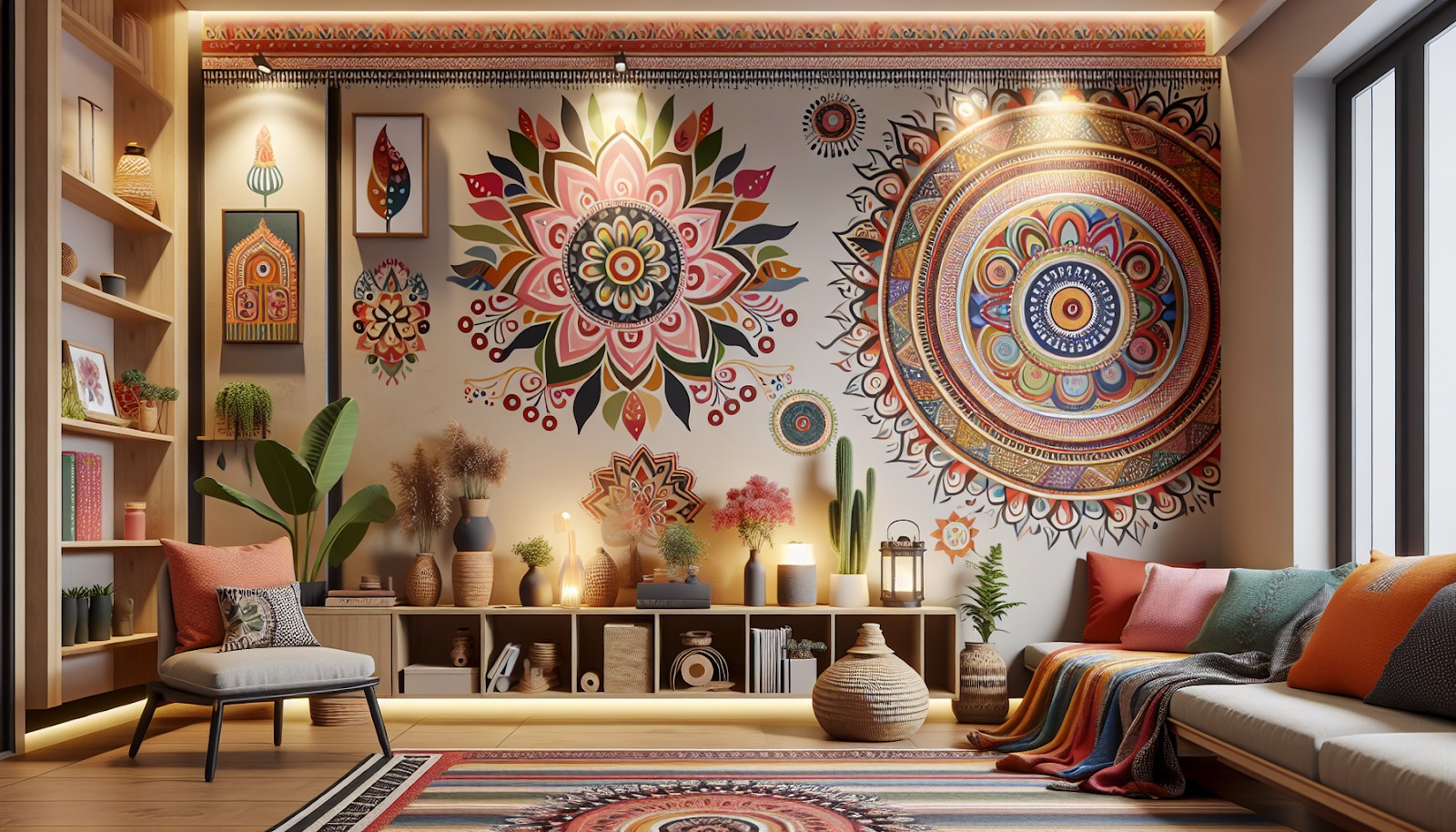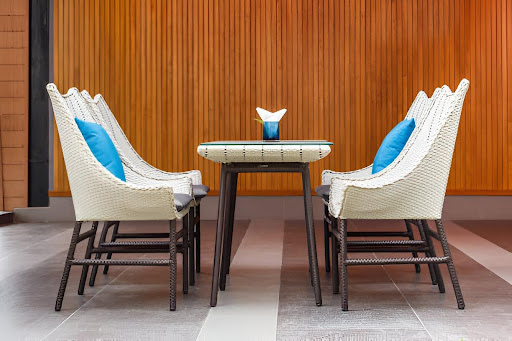In the realm of interior design, the fusion of cultural artifacts with contemporary styles can create a harmonious and visually striking environment. Indian wall hangings, with their vibrant colors, intricate designs, and rich symbolism, offer a unique opportunity to enhance modern decor. This article delves into the art of pairing Indian wall hangings with modern decor, providing insights into styles, materials, and practical tips to create an aesthetically pleasing space. Whether you are looking to add a touch of tradition to your minimalist home or seeking ways to enhance your existing decor with a cultural flair, this guide will help you navigate the possibilities.
The Allure of Indian Wall Hangings
Indian wall hangings come in a myriad of forms, ranging from hand-stitched tapestries and embroidered fabrics to intricate wooden carvings and metal art. Each piece tells a story and embodies the rich cultural heritage of India. According to a report by the Indian Crafts Council, the textile sector, which includes wall hangings, contributes significantly to India’s economy, with exports reaching over $40 billion annually. This heritage not only brings a sense of authenticity but also provides a conversation starter in any modern setting. The materials used, such as cotton, silk, and jute, make these hangings versatile and adaptable to various decor styles, allowing homeowners to integrate them seamlessly into their spaces.
Understanding Modern Decor Styles
Modern decor is characterized by simplicity, clean lines, and a minimalist approach. Styles such as Scandinavian, industrial, and mid-century modern emphasize functionality and form over excess. However, this does not mean that modern spaces should be devoid of character. Incorporating Indian wall hangings into these styles can add warmth, color, and texture, breaking the monotony of minimalism. For example, a large, colorful tapestry can serve as a focal point in a neutral-toned room, drawing attention and creating visual interest. Additionally, the use of geometric patterns in modern decor can complement the intricate designs of Indian textiles, creating a beautiful juxtaposition that enhances the overall aesthetic.
Choosing the Right Wall Hangings
When selecting Indian wall hangings for modern decor, it is essential to consider both the color palette and the overall theme of the space. Wall hangings in bold, vibrant colors can energize a room, while more muted tones can bring a sense of calm and sophistication. Tapestries featuring traditional motifs such as paisleys, mandalas, or nature-inspired designs can complement modern furniture and decor elements. For instance, a hand-embroidered wall hanging with earthy tones can pair beautifully with a modern wooden dining table. Moreover, considering the size and scale of the wall hanging is crucial; oversized pieces can create a dramatic impact, while smaller ones can be grouped together to form a gallery wall, adding depth and interest.
Placement and Arrangement
The placement of Indian wall hangings is crucial in achieving a cohesive look. A well-placed wall hanging can draw the eye and serve as a focal point in a room. For example, a large tapestry can be hung above a sofa or a bed, creating a striking backdrop. In contrast, smaller wall hangings can be arranged in an asymmetrical gallery style to add a contemporary touch. According to design experts, maintaining a consistent height when hanging multiple pieces is essential for visual harmony. Additionally, incorporating other decor elements, such as plants or modern art, can help create a balanced composition that showcases the wall hanging without overwhelming the space.
Complementary Decor Elements
To elevate the impact of Indian wall hangings within modern decor, it is important to select complementary decor elements. Furniture pieces with clean lines, such as a sleek sofa or a minimalist coffee table, can provide a modern counterpoint to the intricate designs of the wall hanging. Additionally, incorporating metallic accents, such as brass or gold frames, can enhance the richness of the textiles while maintaining a contemporary feel. Lighting also plays a significant role; strategically placed spotlights or pendant lights can highlight the texture and colors of the wall hangings, creating a warm and inviting atmosphere. Furthermore, incorporating textiles like throw pillows or rugs that echo the colors or patterns of the wall hanging can create a cohesive design narrative throughout the space.
Maintenance and Care
Like any decorative element, Indian wall hangings require proper care to preserve their beauty and longevity. Dusting regularly with a soft cloth can prevent the buildup of dirt and debris. For fabric hangings, spot cleaning may be necessary, while some pieces may require professional cleaning to maintain their vibrancy. It is also advisable to keep wall hangings out of direct sunlight to prevent fading. Additionally, using appropriate hanging hardware can ensure that the pieces are securely mounted, preventing damage over time. By taking these steps, homeowners can enjoy the beauty of their Indian wall hangings for years to come.
Incorporating Personal Touches
One of the joys of home decor is the opportunity to express personal style and cultural appreciation. When pairing Indian wall hangings with modern decor, consider incorporating personal touches that resonate with your experiences or travels. For instance, if you have visited India or collected artifacts during your travels, integrating these elements can create a meaningful connection to the decor. Additionally, mixing different styles and cultures can lead to a unique and eclectic design that reflects your personality. The beauty of modern decor lies in its flexibility; as long as the pieces harmonize, you can create a space that is distinctly yours.
Conclusion
The art of pairing Indian wall hangings with modern decor is an enriching experience that celebrates cultural heritage while embracing contemporary design principles. By carefully selecting pieces that resonate with your aesthetic, considering placement and complementary elements, and maintaining them with care, you can create a space that is both vibrant and harmonious. As you explore the possibilities, remember that your home should be a reflection of your individuality and experiences, allowing you to enjoy the beauty of diverse cultures in a modern context. The marriage of Indian artistry and modern design not only enhances the visual appeal of your space but also invites conversation and connection, making your home a true sanctuary of style and culture.



